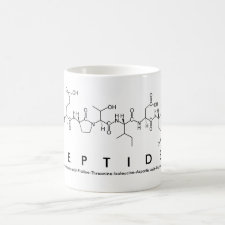
Authors: Hwang CC
Publication date: 2004
Article title: Separation of the enantiomers of mandelic acid by liquid chromatography using molecularly imprinted polymer as the stationary phase.
Page numbers: 172-181
Alternative URL: https://www.jstage.jst.go.jp/article/apcche/2004/0/2004_0_172/_article
Proceedings title: Asian Pacific Confederation of Chemical Engineering congress program and abstracts
Publisher: The Society of Chemical Engineers, Japan
Volume number: 2004
Abstract: Styrene is used in a variety of chemical industries. Environmental and occupational exposures to styrene occur predominantly through inhalation. The major metabolite of styrene is present in two enantiomeric forms, chiral R- and S- 1-hydroxy-1-phenyl-lacetic acid (R-and S-mandelic acid, MA). Thus, the concentration of MA, particularly its enantiomers, has been used in urine tests to determine whether workers have been exposed to styrene. This study describes a method of analyzing mandelic acid using molecular imprinting techniques and HPLC detection to make the separation of the diastereoisomers of mandelic acid possible. The molecularly imprinted polymer (MIP) was prepared by non-covalent molecular imprinting using (+) MA, (-) MA or (+) phenylalanine, (-) phenylalanine as templates. Methacrylic acid (MAA) and ethylene glycol dimethacrylate (EGDMA) were copolymerized in the presence of the template molecules. The bulk polymerization was carried out at 4°C under UV radiation. The resulting MIP was ground into 25~44µm particles, which were slurry packed into analytical columns. After the template molecules were removed, the MIP-packed columns were found to be effective for the chromatographic resolution of (±)-mandelic acid. This method is simpler and more convenient than gas chromatography or other methods.
Template and target information: mandelic acid



Join the Society for Molecular Imprinting

New items RSS feed
Sign-up for e-mail updates:
Choose between receiving an occasional newsletter or more frequent e-mail alerts.
Click here to go to the sign-up page.
Is your name elemental or peptidic? Enter your name and find out by clicking either of the buttons below!
Other products you may like:
 MIPdatabase
MIPdatabase









